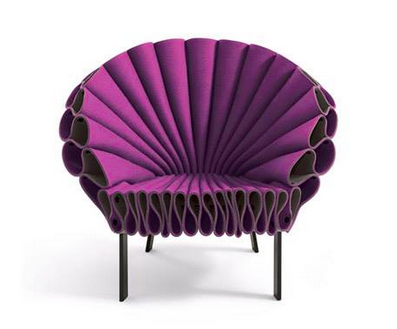Felt and Ecological Design
 20. 8. 2014
20. 8. 2014
Finding interesting materials for your designer´s pieces do not have to be easy. Quality, price, characterictics of fabrics, process of making, durability and another important factors affect your overal view and finally, influence the customer´s feeling – either satisfaction or discontent. In this article we look at the advantages of the decorative felt and other materials that are extraordinary by their properties and are friendly to the environment.
Felt Design in Wide Range of Uses and Colours
Felt decoration is amazing, it can revive each space and room in your house. Wall panels in the bedroom, table and chairs in the living room, pieces of clothing, handbags, slippers, the mobile covers, pads for the pets...In addition, felt design is colourful (e. g. pink felt), it has clear-cut edges and anti-reflex surface. You can create anything from the craft felt.
Wood Design
This classical material is known in two ways – as natural or as artificially made. The first type is resistant to abrasion, provides termal and acoustic insulation and has a long term durability. What´s disadvantage of it? It´s not resistant to moisture and water. Wooden chairs or tables can scratch and damage your floor surface. You can avoid it by putting felt pads on the furniture legs.
Wood is also grouped into the categories:
According to the mechanical properties: hardwood and softwood.
According to its geografical origin: native wood (from plants living in the Europe) and exotic wood (from plants living in tropical countries).
Organic Cotton
This fabric is made from soft wool which is mainly waste of spinning. It´s shiny, not elastic and it´s not the friend of the high temperature. But felt is flame resistant, it can´t burn so easily. Typical use of cotton is in fashion industry or in interior design.
The Queen of Material – Silk
Let´s look at the clothing. We chose the queen of material – silk. Natural silk belong to the textiles that are more luxury and more expensive. Country of its origin is China where the tradition of making silk is old 5000 years. Silk clothing is one of the most hypoallergenic, it regulates the temperature and absorbs moisture. The disadvantage is its higher price. Silk is produced in Europe only in the small amounts.
Bamboo – Evergreen Tropical Plant
This interesting material comes from plants in the tropical climates. It´s light, elastic, antibacterial, antistatic and it repels odour. It´s possible to design eye-catching wall decorations or breathable clothing. It absorbs more water than cotton or polyester. Of course, it has eco-friendly status.
Recycled materials save the planet
Saving our environment can be easy by using renewable sources. You can use recycled materials to make interesting pieces. Decoration felt is decomposable so you can be sure that you avoid harmful environmental impact.




